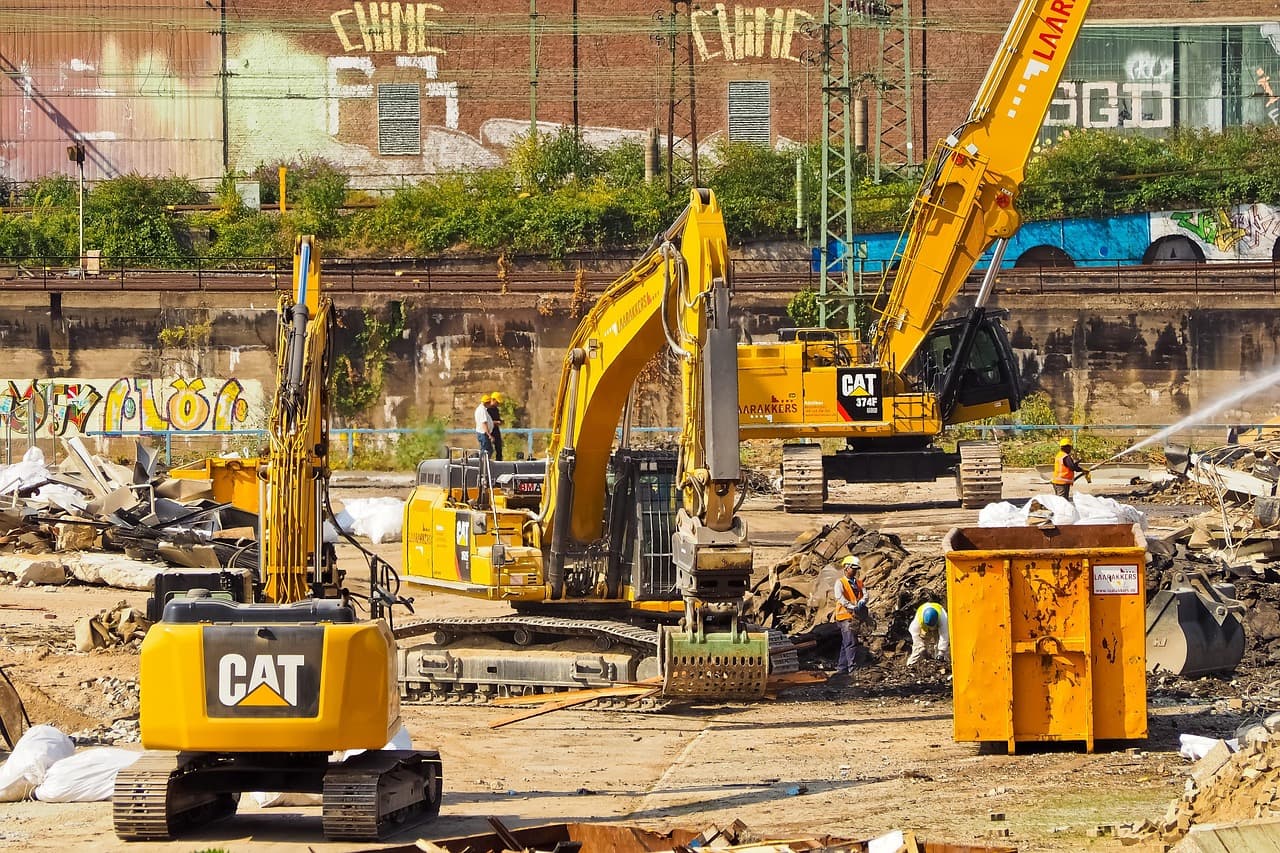The Hidden Cost: How Administrative Inefficiencies Are Draining Construction Productivity


Explore how administrative burdens and inefficient processes are costing the construction industry billions annually, and discover how modern technology solutions can help reclaim lost productivity.
The Hidden Cost: How Administrative Inefficiencies Are Draining Construction Productivity
In an industry where margins are already razor-thin, construction companies can't afford to waste resources. Yet research consistently shows that the sector loses billions annually to inefficiencies that could be prevented with the right systems and approaches. These productivity drains aren't just hampering profitability—they're threatening the industry's ability to meet growing infrastructure demands in an increasingly challenging labor market.
The Management Crisis in Construction
The construction industry faces a stark reality: it's significantly lagging behind other sectors in productivity growth. While industries like retail and manufacturing have seen dramatic productivity increases since 1945, construction has remained relatively stagnant, with productivity growth averaging just 1% annually compared to 3.6% in other sectors.
This productivity gap has serious economic implications. A recent survey by FMI Corp found that U.S. contractors wasted between $30 billion and $40 billion in 2022 due to labor inefficiencies, with 45% of respondents noting declining labor productivity on their job sites in the previous 12-18 months.
The problem is particularly concerning given the industry's significance to the global economy. Construction contributes approximately 24% to global GDP, making productivity improvements not just beneficial for individual companies but essential for addressing worldwide infrastructure and housing challenges.
Administrative Burdens: The Silent Productivity Killer
Among the many factors contributing to construction's productivity crisis, administrative inefficiencies stand out as particularly wasteful. These paper-pushing tasks divert valuable resources away from actual building work:
1. Documentation Overload
Construction professionals spend an inordinate amount of time completing and processing paperwork. One major obstacle to worker productivity is the completion of administrative tasks like manually submitting daily reports, field notes, and uploading site photos—all of which reduce the time available for project-specific work.
Consider the daily reporting process alone: superintendents and project managers often spend 30-60 minutes each day compiling these reports—time that could be spent solving problems, coordinating work, or addressing quality issues.
2. Request for Information (RFI) Management
RFIs are essential for clarifying project details, but their processing creates significant administrative burden. On average, there are 9.9 RFIs for each $1 million of construction project value, costing a typical large-scale construction project almost $900,000 in processing costs alone.
The RFI process itself often becomes inefficient due to:
- Delays between submission and response
- Multiple back-and-forth communications to clarify incomplete or vague requests
- Coordination challenges across multiple stakeholders
- Poor tracking and documentation systems
3. Email Management Inefficiency
Project communication is vital, but email management has become a significant drain on productivity. The average knowledge worker dedicates about 19 hours each week to written messages alone, leaving almost no time for focused work, while 55% of employees say they waste excessive time figuring out how to reply or interpret written messages.
For construction professionals managing multiple projects, this email overload is particularly problematic, as important information gets buried in overflowing inboxes, creating delays and missed communications.
4. Duplicate Data Entry
Construction teams frequently find themselves entering the same information multiple times across different systems. Over-processing waste in construction includes unnecessary administrative workflows that lead to double data entry, such as multiple signatures on forms, redundant daily reports, and forwarding emails with drawings and RFIs.
This redundancy not only wastes time but also increases the likelihood of errors and inconsistencies in project documentation.
The Human Cost of Administrative Inefficiency
Beyond direct financial impacts, administrative burdens take a significant toll on workforce satisfaction and retention:
Skilled Labor Focused on Paperwork
In a time of critical skilled labor shortage, having your most experienced workers spending hours on paperwork rather than applying their expertise to construction tasks is particularly wasteful. A survey by the Construction Industry Training Board highlighted concerns over career progression and development opportunities as key reasons for professionals leaving the industry, issues that are exacerbated when administrative tasks take precedence over skills development.
Morale and Job Satisfaction
While construction professionals generally report high job satisfaction, administrative burdens can quickly erode that positive sentiment. A survey of quantity surveying professionals revealed that 85% were either satisfied or very satisfied in their roles, but would far rather be using administrative time on procurement, training, business development, contract management or actual construction work on-site.
The Path Forward: Tackling Administrative Waste
Addressing these inefficiencies requires a multi-faceted approach that leverages both process improvements and technology:
1. Digital Transformation of Documentation
Moving from paper-based to digital documentation systems can dramatically reduce administrative time. Construction project management software streamlines documentation processes by allowing workers to enter project information through daily reports and field notes in real-time while on the job site, with photos uploaded immediately from mobile devices instead of requiring manual transfers.
2. Standardized Communication Protocols
Establishing clear communication channels and protocols reduces redundancy and confusion. Setting time limits for designers to respond to RFIs helps maintain project momentum, while creating standardized RFI formats promotes consistency and clarity in communication, making it easier to track and manage requests effectively.
3. Intelligent Email Management
Implementing systematic approaches to email management can reclaim hours of productive time each week. Researchers recommend setting expectations together about communications to find that "just enough" flow, and using work management platforms that offer more visibility so teammates and leaders can see project and task statuses without wasting time on too many back-and-forth messages.
4. AI and Automation
The next frontier in reducing administrative burden involves leveraging artificial intelligence to automate routine tasks. Advanced features like AI-driven analytics for resource planning, real-time data integration from IoT devices, and collaboration tools are helping construction professionals stay informed without the manual effort traditionally required.
How Rethink Addresses Administrative Inefficiencies
Our platform tackles these productivity challenges head-on by fundamentally transforming how construction teams handle administrative tasks:
Voice-Assisted Documentation
Instead of spending hours on paperwork, site personnel can simply speak their observations and updates. Our AI assistant transcribes and organizes this information automatically, eliminating the documentation barrier that often leads to incomplete or delayed reporting.
Intelligent Email Processing
Rethink's email management system automatically categorizes, prioritizes, and even actions emails based on content analysis. By understanding project context from previous communications and documentation, the system makes informed decisions about message importance rather than relying on manual sorting.
RFI Streamlining
Rather than going through the traditional time-consuming RFI process, teams can get immediate answers to many questions through our knowledge base that connects relevant project documentation. For formal RFIs, our system guides users through a structured process and provides tracking and analytics to identify bottlenecks.
Integration with Existing Systems
Rethink doesn't require abandoning your current tools—it enhances them by connecting with platforms like Procore, simplifying information flow and eliminating duplicate data entry that wastes valuable time.
The Bottom Line: Productivity Gains Mean Business Gains
For construction companies, addressing administrative inefficiencies isn't just about convenience—it's about survival in an increasingly competitive market. A report from the Office for National Statistics revealed that average productivity levels in the construction industry have remained consistently below the UK average, with respondents citing administrative overload, underutilization of technology, and inefficient workload practices as frequent barriers to productivity.
By reclaiming the hours lost to administrative waste, construction companies can improve project delivery times, enhance quality, increase worker satisfaction, and ultimately boost profitability in an industry where margins are constantly under pressure.
As the industry faces continued labor shortages and increasing demand, the companies that will thrive are those that enable their skilled workers to spend their time building rather than shuffling paper. With the right approach to eliminating administrative inefficiencies, construction can finally begin to close the productivity gap that has held it back for decades.


